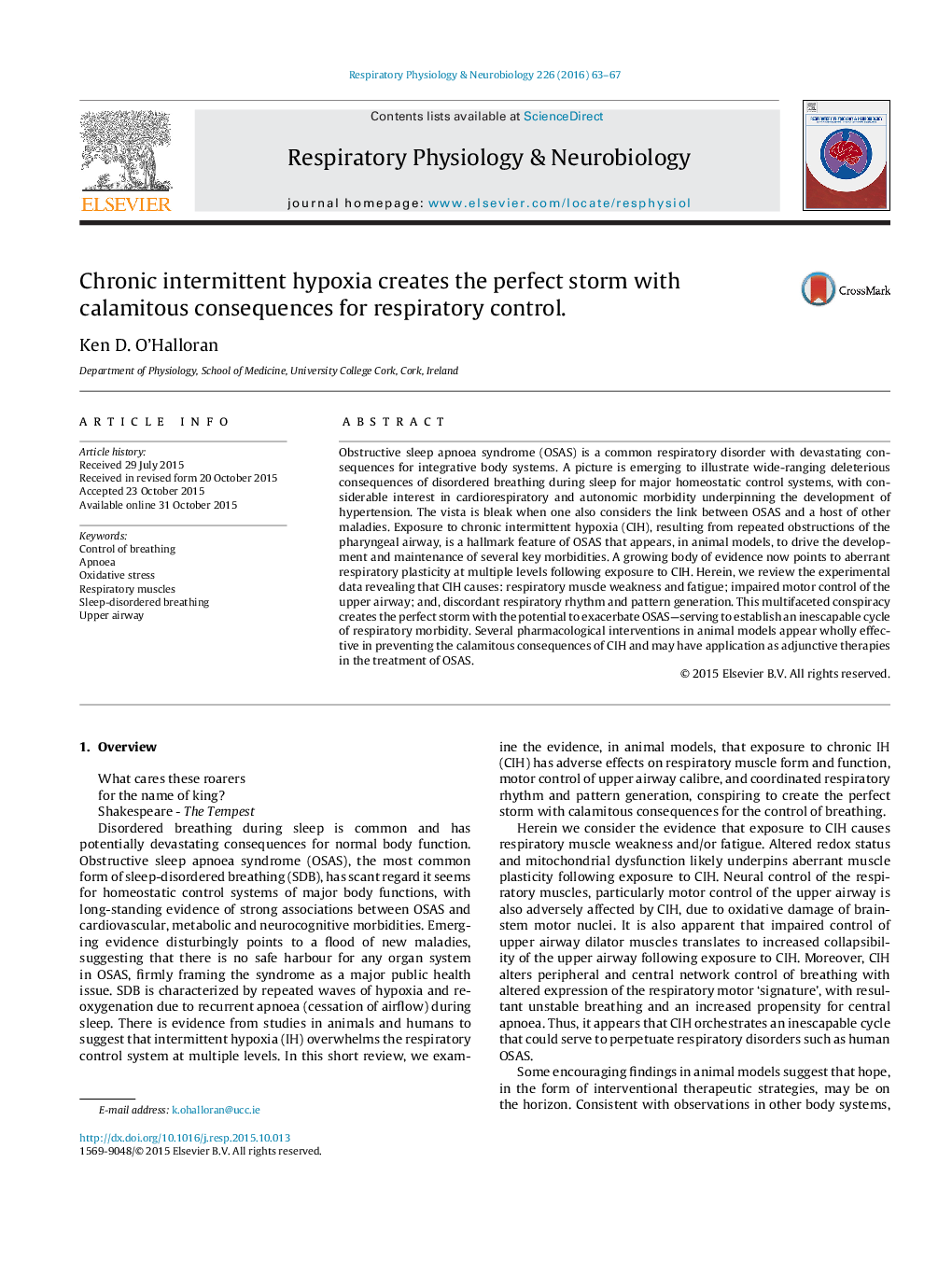| Article ID | Journal | Published Year | Pages | File Type |
|---|---|---|---|---|
| 2846715 | Respiratory Physiology & Neurobiology | 2016 | 5 Pages |
•Chronic intermittent hypoxia (CIH) is a dominant feature of sleep-disordered breathing (SDB), which is very common.•CIH has adverse effects on the respiratory control system at multiple levels.•Experimental evidence in animal models suggests that CIH orchestrates an inescapable cycle that perpetuates respiratory morbidity.•Antioxidant and other emerging treatments may have application as adjunctive pharmacotherapies in SDB.
Obstructive sleep apnoea syndrome (OSAS) is a common respiratory disorder with devastating consequences for integrative body systems. A picture is emerging to illustrate wide-ranging deleterious consequences of disordered breathing during sleep for major homeostatic control systems, with considerable interest in cardiorespiratory and autonomic morbidity underpinning the development of hypertension. The vista is bleak when one also considers the link between OSAS and a host of other maladies. Exposure to chronic intermittent hypoxia (CIH), resulting from repeated obstructions of the pharyngeal airway, is a hallmark feature of OSAS that appears, in animal models, to drive the development and maintenance of several key morbidities. A growing body of evidence now points to aberrant respiratory plasticity at multiple levels following exposure to CIH. Herein, we review the experimental data revealing that CIH causes: respiratory muscle weakness and fatigue; impaired motor control of the upper airway; and, discordant respiratory rhythm and pattern generation. This multifaceted conspiracy creates the perfect storm with the potential to exacerbate OSAS—serving to establish an inescapable cycle of respiratory morbidity. Several pharmacological interventions in animal models appear wholly effective in preventing the calamitous consequences of CIH and may have application as adjunctive therapies in the treatment of OSAS.
